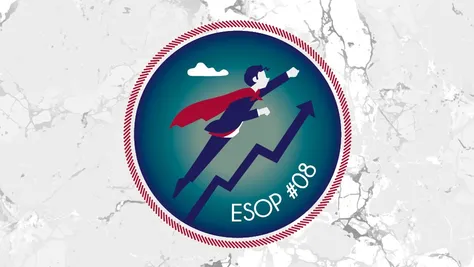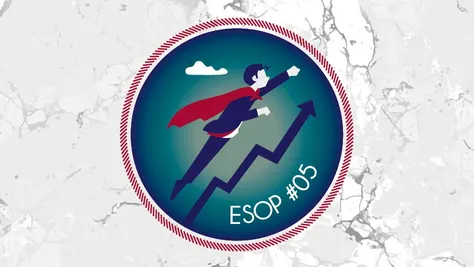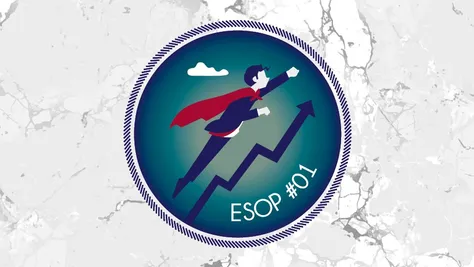Employee stock ownership plans (ESOPs) enjoy considerable popularity on both sides of the Atlantic. They give employees the opportunity to acquire a participating interest in the company in which they work under various conditions. In this way, they will receive shares in the company and related benefits in addition to their standard employee remuneration. The current shareholder logically has to share part of his ownership of the company with the managers - so at first glance, it may seem that an ESOP does not bring any advantages for the founders and majority shareholders. Moreover, an ESOP implementation is a complex and comprehensive process, at the end of which seemingly (!) only disadvantages await the founder. So why would the founder want an ESOP at all? What advantages can it bring to him? Answers to questions seeking the founder's motivation, as well as the basic advantages of an ESOP for him, can be found below in our first part of ESOP’s leadership.
Relentless statistics
ESOPs[1] and their impact are constantly under the scrutiny of many expert studies. Their results speak clearly - over the long term, ESOP implementation has been shown to have a robust positive effect on companies. Companies that have implemented ESOPs are doing much better compared to the pre-ESOP implementation period. Similarly, such companies with ESOPs are doing much better compared to other similar companies that have not implemented ESOPs.
The benefits of ESOP implementation are inevitably reflected in specific economic indicators of the company. Companies that have ESOPs perform better in key economic indicators such as return on equity (ROE), return on assets (ROA), or profit margin.
In addition to the fact that an ESOP implementation seems to promise greater profitability and productivity for the company, the results also indicate that a management plan can be a guarantee for the long-term duration of the company. In fact, companies with ESOPs are much less likely to go bankrupt or leave the market for any other reason.
Hard data have long shown that implementing an ESOP is a good move for the company as a whole - its overall positive effect translates not only into the overall profitability and productivity of the company but also into the length of its existence and greater resilience to the impacts of various crises. Of course, these are all advantages that a shareholder must appreciate. Ensuring greater stability and profitability of the company also increases the value of his shareholding and ensures continuous dividend distribution also for his benefit.
But how does it all work? This is a comprehensive issue that will be presented in more detail in future parts of ESOP's leadership from a managerial perspective and in Lex ESOP from a legal perspective. The issue of motivation of employees is crucial, which is then reflected in many areas of their performance and thus positively affects the performance of the entire company to the satisfaction of its founder. Competent employees need to be retained in the company and properly motivated. An ESOP can easily help with this, too.
Employees come first
Retaining employees, especially key ones, is all the more pressing in a period of near-zero unemployment. Quality employees and corporate superstars are in great demand in the labour market and the possibility of binding such employees long-term while maintaining their motivation level sounds like a dream come true (and a large amount of saved recruiting costs). Management plans can help with this too - employees involved in ESOPs leave the company much less and beyond their written employment contract, they remain with the company for a longer period also by their own “intrinsic psychological contract”. Lower employee turnover is therefore another positive benefit of ESOPs.
And isn't it enough to just give employees a raise?
Many shareholders may be wondering why to take the time to implement an ESOP and take the above risks when it is possible to simply give employees a "raise". Won't the effect be the same in the end?
Not exactly. A pay raise or another form of cash bonus is of course in itself a good motivational tool for employees. However, it cannot be used as the only way to motivate employees in the long term - it is often reported that already after 6 months the employee does not perceive the raise positively at all and takes the new remuneration/bonus for granted. In the long term, just increasing the remuneration may not be beneficial and may also not bring the expected positive results over time.
Employees who will be remunerated in this separate way may lose their intrinsic motivation to do a good job for the company. Conversely, over time, extrinsic motivation factors may begin to dominate - so if the company eases up on remunerating, these previously motivated employees may also ease up on their work.
Therefore, it is not appropriate to rely on pay raises, bonuses and other remuneration as a universal way to motivate employees.
Why and how does motivating employees through ESOPs work so much better than the traditional ways and how can it all be communicated across the entire company? This will be presented in the next two parts of ESOP’s leadership.
- [1] – Although there are differences between the terms ‘ESOP’ (Employee Stock Ownership Plan or Employee Stock Option Plan) and ‘management plans’ (particularly in the scope of both terms), for purposes of this text, they will be used interchangeably. Specific differences will also be presented in the ESOP series (specifically the Lex ESOP series, which we will also be posting on our blog).









